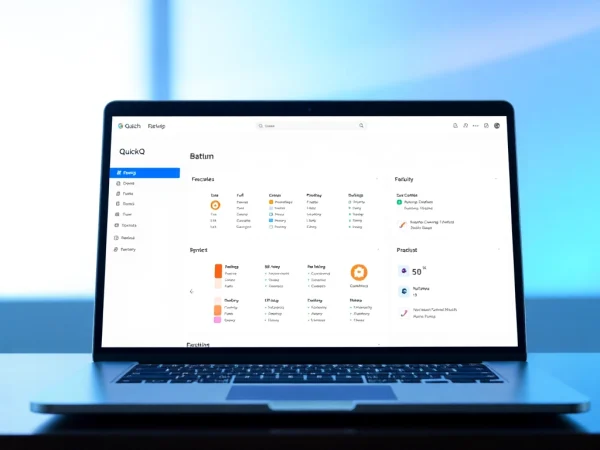Enhancing Performance: The Essential Role of Thermal Management Materials in Electronics
Understanding Thermal Management Materials
What Are Thermal Management Materials?
Thermal management materials are essential components designed to effectively dissipate heat generated by electronic devices and other applications. These materials play a crucial role in preventing overheating, improving performance, and extending the lifespan of electronic components. By providing efficient heat transfer and dissipation, they help maintain optimal operating temperatures for a variety of applications, from consumer electronics to complex industrial machinery. Examples of these materials include thermal interface materials (TIMs), phase change materials (PCMs), and gap fillers.
As technology advances and devices become more powerful, the need for effective thermal management materials continues to grow. This article delves deeply into the science, applications, and best practices surrounding these important substances, offering valuable insights for engineers, designers, and manufacturers alike.
The Science Behind Heat Transfer
Heat transfer is a fundamental aspect of thermodynamics, and it occurs primarily through three mechanisms: conduction, convection, and radiation. In electronic devices, conduction is the primary means through which heat moves between components; this process relies heavily on the thermal conductivity of materials used in the construction of these devices.
Conduction is the transfer of heat through a solid material. In electronic assemblies, heat moves from hot components, such as processors and power transistors, into heat sinks or thermal pads. Developing materials with high thermal conductivity can significantly improve heat dissipation, which is critical for the effective performance of electronic systems.
Convection, on the other hand, involves the transfer of heat through fluids (liquids or gases). It occurs when hot air rises and cooler air takes its place, allowing for heat to escape from the device. While convection plays a role in cooling, the effectiveness of thermal management materials is often defined by their ability to conduct heat away from components into the surrounding environment.
Finally, radiation is the transfer of heat in the form of electromagnetic waves. While less significant in most electronic applications, understanding thermal radiation is crucial, especially in high-temperature scenarios. Collectively, these three mechanisms inform the design and selection of thermal management materials.
Common Types of Thermal Management Materials
Thermal management materials can be categorized into various types, each serving specific purposes in different applications. Here are some of the most common:
- Thermal Interface Materials (TIMs): These materials fill the microscopic air gaps between surfaces to improve thermal conductivity. They ensure efficient heat transfer between components and heat sinks. Common examples include thermal pastes, gels, and pads.
- Phase Change Materials (PCMs): PCMs absorb and release heat as they change states (from solid to liquid and vice versa) at specific temperatures. They are ideal for applications requiring thermal regulation over a wide temperature range.
- Gap Fillers: These materials are used in applications where a complete fill is required to cover the gap between two components. They provide thermal conductivity while also cushioning and protecting the components.
- Thermal Tapes: Pressure-sensitive adhesives that offer both adhesion and thermal conductivity. They are often utilized in lightweight electronic applications due to their ease of use and versatility.
- Thermal Pads: Soft, tacky pads that conform to surfaces, improving contact and heat transfer. They’re frequently found in consumer electronics and LED lighting applications.
Applications of Thermal Management Materials
Electronics: Keeping Components Cool
One of the most significant applications of thermal management materials is in the electronics industry. As devices become increasingly compact and powerful, managing heat becomes essential. High-performance processors generate substantial amounts of heat, necessitating effective thermal solutions.
In consumer electronics such as smartphones, tablets, and laptops, thermal interface materials are utilized between the chip and heat sinks to ensure efficient heat conduction. Similarly, in high-power industrial applications, the integration of effective thermal management solutions can lead to more reliable and longer-lasting equipment.
Furthermore, in the burgeoning field of electric vehicles (EVs), thermal management materials play a vital role in battery cooling. As lithium-ion batteries generate heat during charge cycles, effective dissipation techniques protect against thermal runaway and optimize performance.
Aerospace and Automotive Uses
In highly demanding environments such as aerospace and automotive, thermal management is critical due to the rigorous operational conditions these systems must endure. Aerospace applications often involve extreme temperature variations, and materials must retain functionality across vast ranges.
For instance, in the aerospace industry, thermal management materials must comply with strict safety regulations and withstand extreme conditions, including high altitudes where air density is minimal. These materials help maintain optimal temperatures for sensitive electronics used in navigation systems and instrumentation.
Similarly, in the automotive sector, thermal interface materials are used to manage heat in power electronics and battery systems. As vehicles transition to electric power, the demand for better thermal management in these new technologies is expected to grow.
Consumer Electronics Solutions
Consumer electronics, equipped with smaller and more powerful components, present unique challenges regarding thermal management. Often located within confined spaces, these devices require innovative thermal management solutions to dissipate heat effectively.
Smartphones, for example, utilize advanced thermal interface materials that not only provide thermal conductivity but also accommodate the thickening of surfaces due to the presence of other components, allowing manufacturers to design sleeker devices without sacrificing performance.
Moreover, the increasing trend of wearable technology escalates the need for efficient thermal management materials. Designers are tasked with ensuring that heat generated by microprocessors does not lead to user discomfort, thereby necessitating the development of ultra-thin thermal conductive layers.
Choosing the Right Thermal Management Material
Key Factors to Consider
Selecting the appropriate thermal management material requires careful consideration of various factors. Key criteria include:
- Thermal Conductivity: Evaluate the thermal conductivity of the material, which indicates its ability to transfer heat. Higher conductivity typically leads to better thermal performance.
- Environment and Application: Consider the operational environment of your device, including temperature ranges, humidity, and exposure to chemicals. Certain materials perform better under specific conditions.
- Mechanical Properties: Assess the mechanical strength and flexibility of the material. It must withstand physical stresses without compromising its thermal properties.
- Cost and Availability: Analyze the cost-effectiveness of the chosen material, as well as its availability and lead times for procurement.
Comparing Conductivity Ratings
One of the most critical metrics when evaluating thermal management materials is thermal conductivity, typically expressed in watts per meter-Kelvin (W/mK). Comparing conductivity ratings helps manufacturers choose the best material for their specific application.
For example, metals like copper and aluminum exhibit exceptionally high thermal conductivity ratings, making them ideal for heat sinks and conductive pathways. Conversely, materials like silicon or certain polymers may offer lower conductivity but could be better suited for flexible applications or in contexts where weight or size constraints exist.
In practice, selecting a material with an appropriate thermal conductivity rating can significantly mitigate overheating issues, enhance device reliability and performance, and reduce the need for additional cooling solutions.
Environmental Impact and Durability
Considering the environmental impact of thermal management materials is increasingly necessary in a climate-conscious marketplace. The following factors should guide decision-making:
- Lifecycle Analysis: Understanding the environmental footprint of materials throughout their lifecycle—from extraction to disposal—can inform better procurement choices.
- Durability: Evaluating longevity under various operational conditions ensures that selected materials will maintain performance over time, preventing frequent replacements.
- Sustainability: Opting for recyclable or bio-based materials can minimize environmental impact while meeting thermal management needs.
Durability tests under operating conditions can reveal critical insights into a material’s long-term performance, allowing for informed decisions that balance performance, cost, and ecological responsibility.
Installation and Implementation Best Practices
Preparing Surfaces for Optimal Adhesion
Effective installation of thermal management materials is as crucial as selecting the right products. Proper surface preparation significantly influences adhesion and overall performance. Here are steps to ensure optimal adhesion:
- Clean Surfaces: Begin by thoroughly cleaning the surfaces that the thermal management material will contact to remove any dust, oils, or residues that could impair bonding.
- Surface Roughness: Ensuring appropriate surface roughness can increase the surface area available for adhesion, leading to better performance.
- Handling Techniques: Minimize contact with the surface material until installation to avoid contaminating the surfaces.
Step-by-Step Installation Guide
The installation process varies depending on the type of thermal management material being used. Below is a general guide for applying thermal interface materials:
- Prepare the surfaces as detailed above.
- Measure the appropriate amount of thermal interface material needed based on the application.
- Apply the material evenly across the surface using a suitable method, whether it’s a squeegee for pads or a syringe for thermal paste.
- Align the components and ensure proper contact pressure is applied to eliminate air gaps.
- Allow the material to cure if applicable, following the manufacturer’s instructions.
Troubleshooting Common Installation Issues
Even with careful preparation and application, issues may arise during the installation of thermal management materials. Here are common problems and solutions:
- Improper Adhesion: If materials do not adhere as expected, re-evaluate the cleanliness and roughness of the surfaces. Consider applying additional pressure or using a different adhesive strategy.
- Air Gaps: Observe application thickness and technique. Insufficient material application can lead to air gaps that hinder thermal conductivity.
- Material Degradation: Monitor the operating environment; exposed materials may degrade quicker than anticipated. Choose materials that meet environmental specifications for the given application.
Future Trends in Thermal Management Materials
Innovations in Material Science
As the demand for more sophisticated thermal management solutions grows, materials science continues to innovate. Emerging trends include the development of advanced composites and nanomaterials that offer enhanced thermal performance and lighter weight.
For example, graphene-based materials have emerged due to their exceptional thermal conductivity and mechanical properties, promising to revolutionize how we manage heat in electronics and other applications.
Furthermore, smart materials that respond dynamically to temperature changes are being explored, which could create the next generation of adaptive thermal management solutions.
Market Trends and Predictions
The market for thermal management materials is expected to grow significantly over the next decade as electronic devices continue to proliferate. Factors driving this growth include the Internet of Things (IoT), electric and hybrid vehicles, and advancements in artificial intelligence.
Manufacturers are increasingly focusing on producing sustainable and eco-friendly thermal management solutions that can cater to shifting consumer preferences. Sustainability is now a market differentiator, pushing companies to develop products that fulfill both performance and environmental criteria.
Sustainability Considerations in Thermal Management
Sustainability is an essential consideration in the development and application of thermal management materials. As industries aim for greener practices, manufacturers are exploring bio-based and recyclable materials that minimize environmental impact.
Additionally, initiatives toward improving the energy efficiency of these materials are being taken seriously, as reducing waste and energy consumption is a critical aspect of modern engineering practices.
It is anticipated that the next wave of thermal management materials will greatly emphasize low-impact production processes and long-term environmental responsibility, aligning with global sustainability targets.










